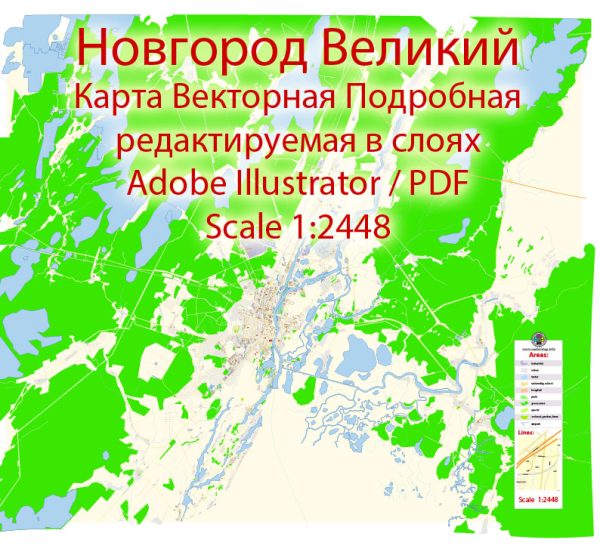Novgorod Veliky, also known as Novgorod the Great, is one of the oldest and most important cities in Russia with a rich history that spans over a millennium. Its urban development is closely tied to key historical events and cultural influences. Here is a brief description of the history of urban development in Novgorod Veliky:
- Early Origins (9th Century): Novgorod was first mentioned in historical records in the mid-9th century, and it quickly became a center for trade and commerce due to its strategic location on the trade routes connecting the Baltic Sea with the Byzantine Empire. The city’s early development was influenced by the Varangians and Slavs.
- Trade and Cultural Exchange (10th-13th Centuries): Novgorod thrived as a trading hub, engaging in extensive commercial activities with various European and Asian regions. The city’s architecture and culture were influenced by contacts with different civilizations, resulting in a unique blend of styles.
- The Hanseatic League and Economic Prosperity (13th-15th Centuries): Novgorod was a member of the Hanseatic League, a powerful economic and trade alliance in Northern Europe. This affiliation contributed to the city’s economic prosperity, which is reflected in the construction of impressive churches, fortifications, and other architectural structures.
- Mongol Rule and Decline (15th Century): The 15th century brought challenges to Novgorod as the city fell under the control of the Grand Duchy of Moscow after a series of power struggles. This marked the beginning of a decline in Novgorod’s influence, and its status as a Hanseatic member diminished.
- Architectural Heritage (16th-17th Centuries): Despite its decline, Novgorod retained a rich architectural heritage during the 16th and 17th centuries. Notable structures include the St. Sophia Cathedral, the St. Nicholas Cathedral, and the Yaroslav’s Court. These buildings showcase a blend of Byzantine and Russian architectural styles.
- Imperial Russia (18th-19th Centuries): With the expansion of the Russian Empire, Novgorod’s strategic importance diminished. However, the city continued to play a cultural and historical role. Many of its historic buildings were preserved, and efforts were made to conserve its cultural heritage.
- Soviet Era and Preservation (20th Century): During the Soviet era, there was a focus on industrialization and modernization, but efforts were also made to preserve Novgorod’s historical sites. Restoration work took place to maintain and protect the city’s cultural and architectural treasures.
- Post-Soviet Era (Late 20th Century-Present): In the post-Soviet era, there has been a renewed interest in preserving and promoting Novgorod’s historical significance. The city has become a UNESCO World Heritage Site, and ongoing efforts focus on the conservation of its architectural heritage and the promotion of tourism.
Novgorod Veliky’s urban development reflects a fascinating journey through the pages of Russian history, showcasing a unique blend of cultural influences and architectural styles. The city stands as a testament to Russia’s rich and diverse heritage.


 Author: Kirill Shrayber, Ph.D.
Author: Kirill Shrayber, Ph.D.